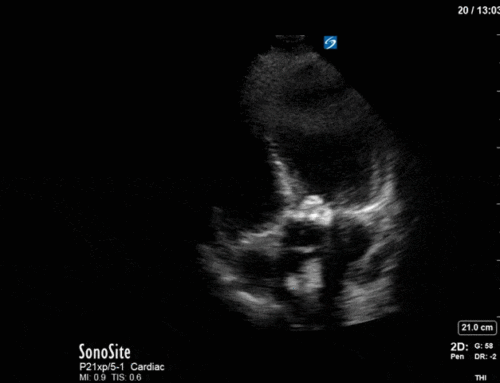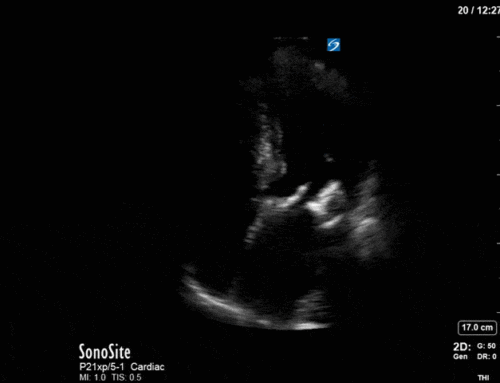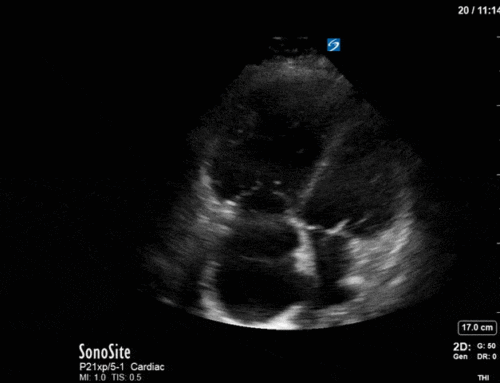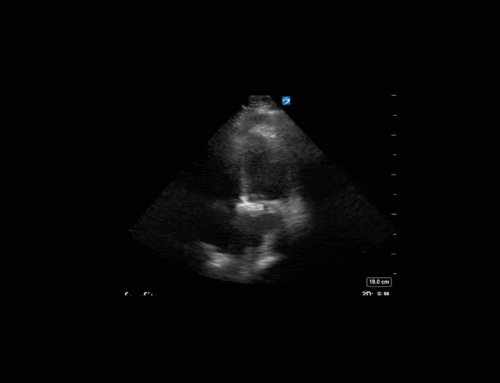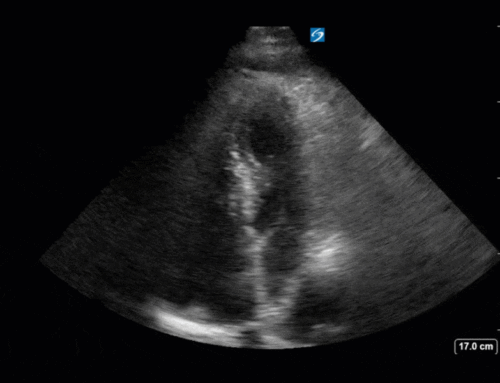In this case you will see 2 echos from the same patient only 1 day apart. The patient had raging septic shock from a skin source and was requiring significant hemodynamic support. You can appreciate the cardiac dysfunction from a 2D point of view but also from a quantitative point of view. The next day – you will see significant changes, now off inotropes (epinephrine, milrinone and norepinephrine).
*Images courtesy of Dr. Vincent Lau, critical care fellow, Western University
Case Highlights:
*Septic cardiomyopathy is a common cause of LV and/or RV dysfunction in the context of severe sepsis or septic shock
*Point-of-care echo can be used repeatedly to recognize often rapid changes in cardiac function that occur during septic illness
*Quantitative stroke volume determination (using VTI from the LVOT) can additionally support your findings and guide management
For a similar case on septic cardiomyopathy, check out CHEST ultrasound corner here.

